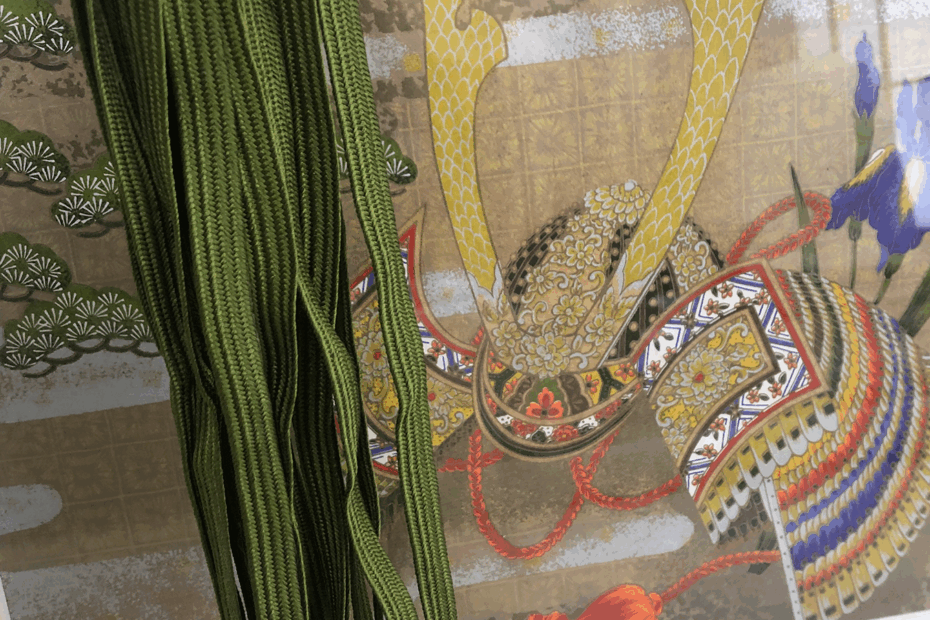The story of kumihimo, or traditional Japanese braiding, begins long before the word itself existed. From cords pressed into clay to shimmering silk braids, it has always been more than a craft — a quiet dialogue between hands, materials, and the human spirit.
From the Earth — Cord Patterns of the Jomon Period
Archaeological discoveries from Japan’s Jomon period (ca. 10,000 BCE – 300 BCE) reveal that people were already twisting and braiding plant fibers into cords. The distinctive cord-impressed pottery that gives the Jomon its name shows the earliest traces of a Japanese sense of pattern and rhythm. These impressions were not mere decoration, but expressions of life and connection pressed into clay.
According to the Nara National Research Institute for Cultural Properties, these patterns represent “the first aesthetic act of binding nature and meaning.” Even at this early stage, we see the foundation of Japan’s visual philosophy — to tie, to weave, to bring form into harmony.

Source: Tokyo National Museum / Wikimedia Commons (Public Domain)
From these humble beginnings — fibers pressed into clay — emerged the idea that form and spirit can be intertwined. The act of tying was already becoming an art of meaning, a gesture that would one day evolve into the refined beauty of kumihimo.
Silk and Spirituality — The Art of Sacred Connection
Silk arrived in Japan around the 3rd to 4th centuries AD, carried across the seas from the Asian continent. While early traces of silk fibers have been found in Yayoi-period sites, the art of sericulture — raising silkworms and reeling threads — was refined after contact with China and the Korean Peninsula. By the Nara period (8th century), Japan had begun to weave its own luminous silk, transforming this foreign thread into a symbol of spiritual connection and imperial grace.
In Buddhist rituals, silk cords were used to bind sacred scrolls and ornaments — a physical link between the divine and the human. At the imperial court, shimmering braids adorned garments, musical instruments, and religious implements. The practice of kumihimo reached new artistic heights, with delicate color harmonies and precise geometries woven by hand. These cords embodied the belief that to tie is to connect, and to connect is to sanctify.
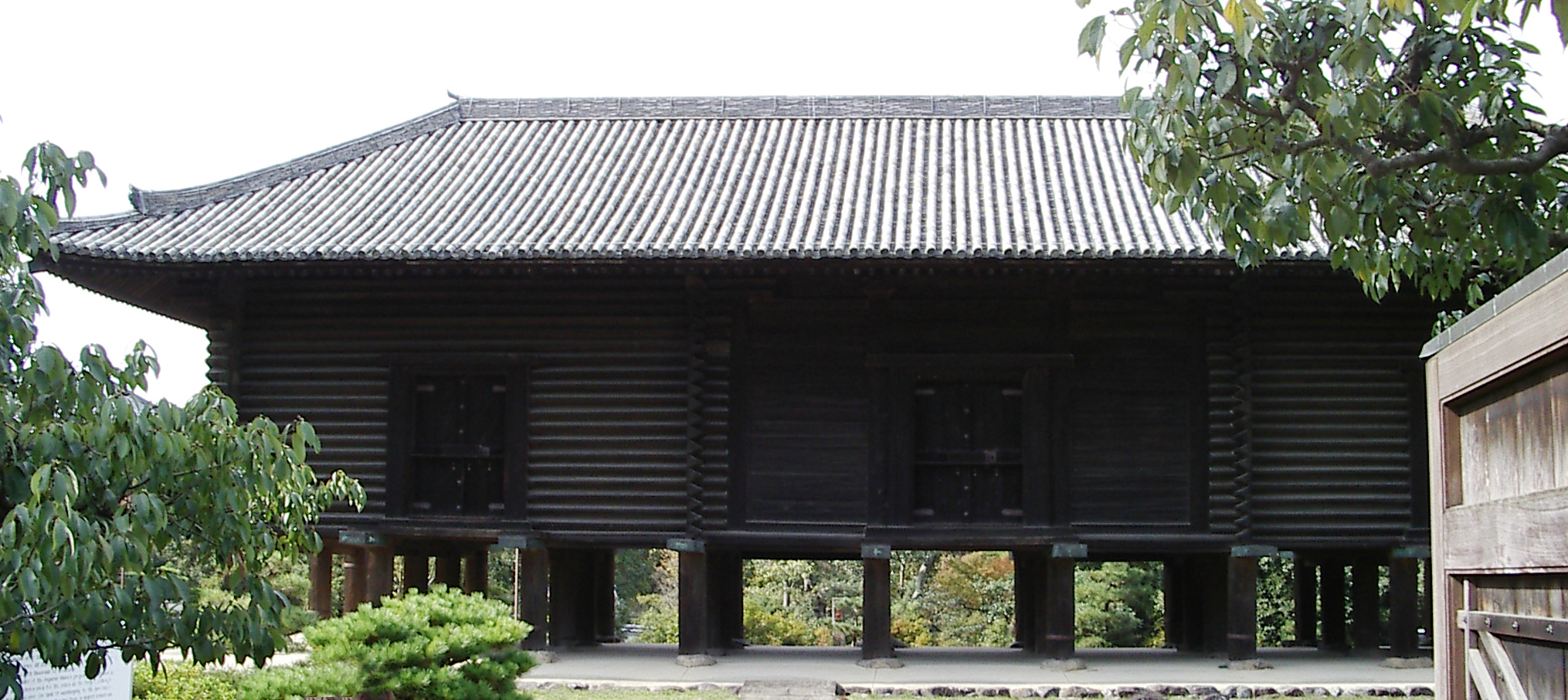
Source: Wikimedia Commons / Public Domain
Source: Wikimedia Commons / Public Domain
For more details and access to the original silk braids preserved in the collection, visit the Shōsōin Official Digital Archive.
From the shimmering threads of the Nara court to the quiet rhythm of the modern braider’s hands, silk has remained a bridge between beauty and devotion. Each braid — delicate yet enduring — carries within it the same wish that once filled the Shōsōin: to preserve what is sacred through the act of tying.
The Warrior’s Aesthetic — Strength and Order
With the rise of the samurai class during the Kamakura and Muromachi periods (12th–16th centuries), kumihimo found new purpose — as a vital component of armor and swords. These cords, once used in sacred rituals, now symbolized discipline, loyalty, and restraint.
The intricate braids that secured armor plates and sword fittings were not mere decoration. They embodied the warrior’s sense of order — a unity of form, function, and spirit. Every color choice, every knot, reflected status and identity: the crimson of courage, the indigo of resolve, the gold of loyalty.

Source: Tokyo National Museum / Wikimedia Commons (CC BY 4.0)
The sageo — the cord that tied the sword’s scabbard to the warrior’s waist — became a visual extension of the samurai’s character. The patterns of edo-uchi braids, perfected in the capital, expressed precision and self-mastery. As the saying went: “To tie one’s sword well is to bind one’s heart.”
Even today, traditional sword restoration preserves these kumihimo cords with reverence, not only as historical artifacts but as reminders that strength and beauty are woven from the same thread. The same hands that once tied armor now tie friendship bracelets, camera straps, or kimono obijime — proof that the spirit of connection endures.
📚 References
- Tokyo National Museum, “Sageo cord for tachi made of kumihimo” — Wikimedia Commons (CC BY 4.0).
- Kumihimo Society of Japan, History of Edo-style Braiding, 2018.
- Makiko Tada, Japanese Braids and the Samurai Culture, Osaka University, 2015.
Modern Harmony — From Craft to Art
From ancient armor cords to contemporary jewelry, the art of kumihimo continues to evolve — bridging centuries through color, texture, and emotion. In today’s world, where everything moves fast, a hand-braided cord still carries the quiet rhythm of patience and care. Atelier Miyabi brings this heritage into the present, transforming traditional silk braids into wearable art that connects hearts across cultures.
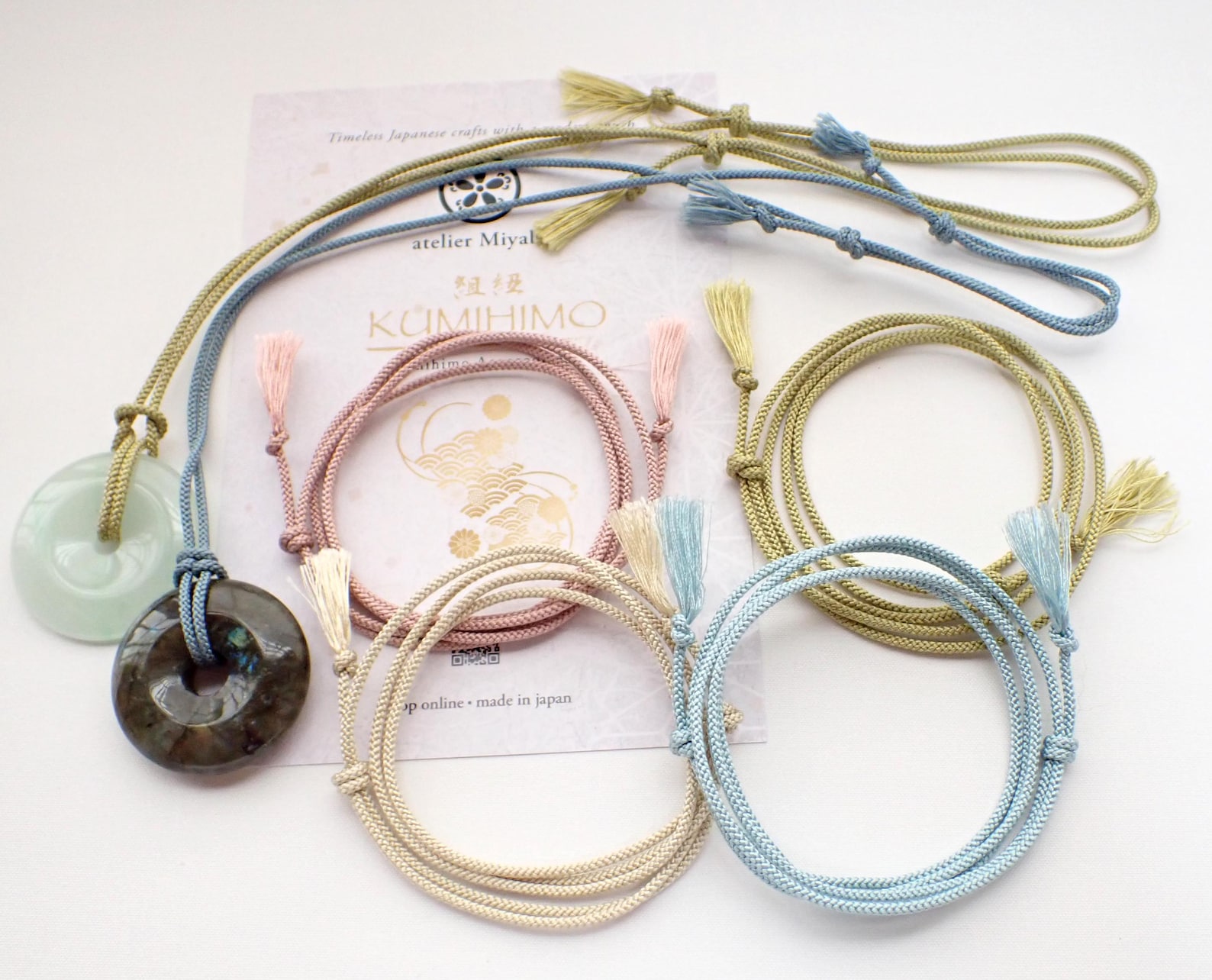
View on Etsy →
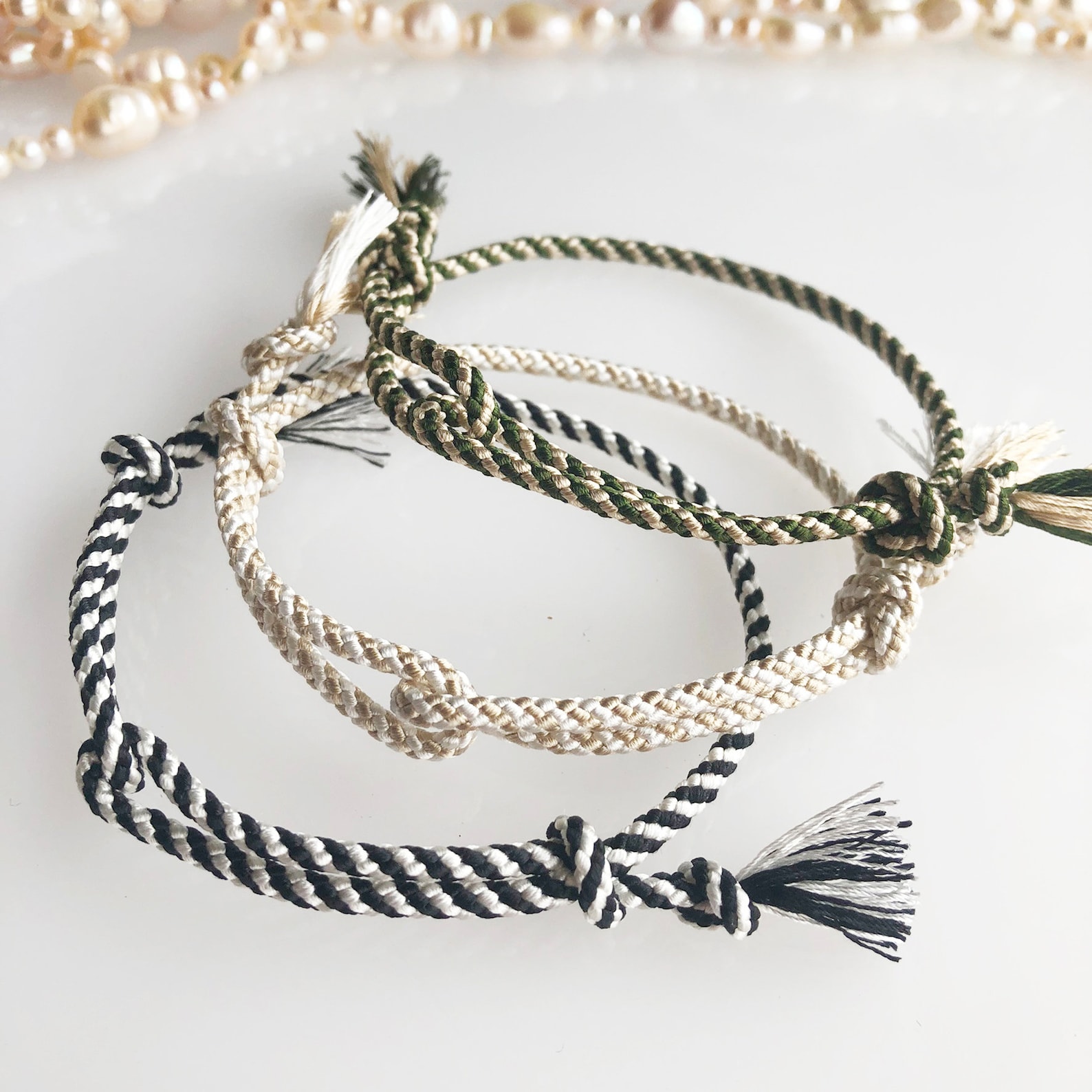
View on Etsy →
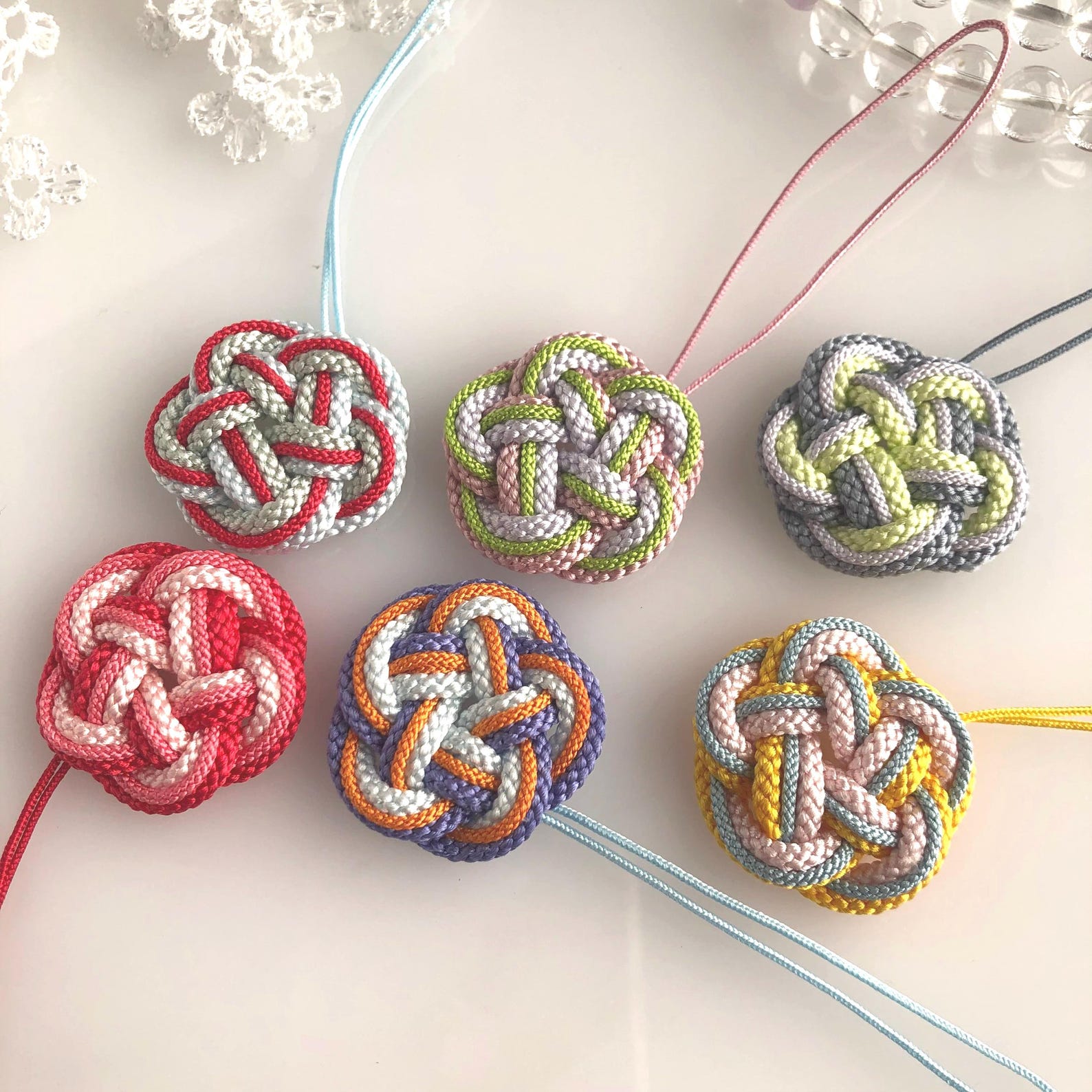
View on Etsy →
Each piece from Atelier Miyabi is braided in Japan using the same meticulous rhythm that once tied armor, scrolls, and kimono. The difference lies in the message — today, these cords tie hearts. They connect East and West, tradition and innovation, craft and emotion.
Through every twist of silk, there is a whisper of history — a thread that binds the ancient and the modern in quiet harmony. This is the essence of Kokoro wo Musubu — “Tied with Heart.”
From the clay of the Jomon, through the silk of Nara, to the armor of the samurai — and now, to the wrists and hearts of people worldwide. The thread continues.
Continuity of the Tying Spirit
Whether pressed into clay, securing armor, or adorning a kimono, the essence of kumihimo remains the same: connection. It is a craft that weaves time, people, and emotions together — a living thread of harmony stretching from Jomon to Reiwa.
“To braid is to remember — each crossing thread preserves the rhythm of countless hands.” — Atelier Miyabi Archives
📚 References & Image Credits
- Makiko Tada, “Himo and the Human Soul,” Osaka University Journal of Literature, 2018.
- Nara National Research Institute for Cultural Properties, “Jomon Pottery Cord Impressions,” 2020.
- Kumihimo Society of Japan, Official Website
- Imperial Household Agency, Shōsōin Treasure Database
- Kyoto Institute of Traditional Crafts, “The History of Kyo Kumihimo,” 2017.
🔗 Related Articles
- → The Meaning of “Musubu” — Tying Hearts Through Threads
- → Read the full “Threads of Harmony” series
Images courtesy of the Agency for Cultural Affairs (Japan), Imperial Household Agency, and Atelier Miyabi Archives.
© Atelier Miyabi | Threads of Harmony Journal.
